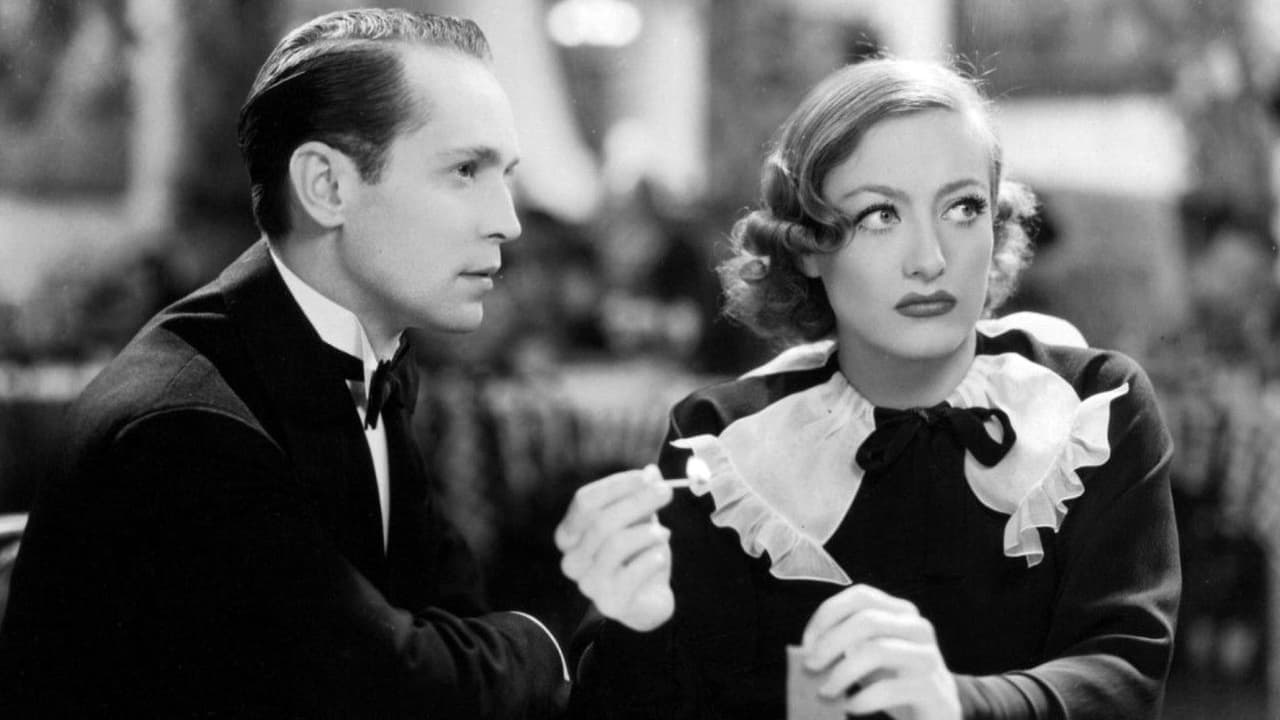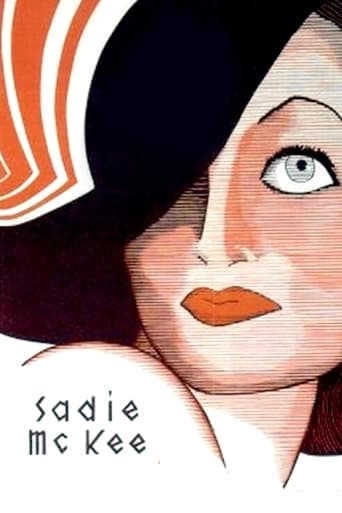

Pretty good movie overall. First half was nothing special but it got better as it went along.
... View MoreInstead, you get a movie that's enjoyable enough, but leaves you feeling like it could have been much, much more.
... View MoreMostly, the movie is committed to the value of a good time.
... View MoreThe film's masterful storytelling did its job. The message was clear. No need to overdo.
... View MoreJoan Crawford is "Sadie McKee" in this 1934 film also starring Gene Raymond, Edward Arnold, Franchot Tone, and Jean Dixon. Crawford is the daughter of the cook for the wealthy Alderson family. The young man of the family, Michael (Tone) has obviously fallen for Sadie, but her heart belongs to loser Tommy Wallace (Raymond), who has just been fired for a malfeasance. Sadie runs off to New York with Tommy, and the two wind up in the rooming house of Mrs. Craney. The next day, they are to be married at City Hall at noon. But showgirl Dolly Merrick (Esther Ralston) who also lives at the rooming house, hears Tommy's dulcet tones and convinces him to forget marriage, leave town, and take a job in her traveling show.Another women rooming at Mrs. Craney's is Opal, who gets Sadie a job at her club. There Sadie meets the filthy rich, drunken Jack Brennan, whom she marries. It turns out that Jack's drinking has all but destroyed his health. Though Sadie can't stop thinking about Tommy, she is determined to help Jack quit drinking and regain his health.Pretty good melodrama, with Crawford wearing some fabulous outfits. Esther Ralston was a gorgeous blonde and is a lively Dolly Merrick, and Jean Dixon gives a good performance as Opal.The debonair Franchot Tone gives a smooth performance as Michael, and Gene Raymond sings and acts pleasantly enough as Tommy, who manages to be likable though he walked out on Sadie.Crawford made a lot of this type of film -- the working girl who moves up in class -- and they were very popular. She gives an appealing performance, and she was one actress who could look and act like a hard-working girl who came from a slum and also pull off being glamorous and wealthy.Worth seeing.
... View MoreSADIE MCKEE is very typical of Joan Crawford's films of the late 20s and 30s. As was usually the case, she plays a poor working girl who eventually makes it big....though in this case she seems far less set on wealth than her other films--it just "drops on her", so to speak.The film begins with Joan as a maid in the home of a rich family whose son is Franchot Tone (who married Joan in real life). She likes Tone but also likes Gene Raymond. When she hears Tone bad-mouthing Raymond and saying Raymond was a bit of a scoundrel, Joan is quick to Raymond's defense. As a result of her blow up at Tone, she impulsively leaves her job and runs off to New York City--where she ultimately discovers Raymond really is a jerk! Oddly, instead of Joan and Tone patching up their differences, they continue to have a thorny relationship--even though you know down deep they care for each other. Much of the rest of the movie involves their on again/off again contact with each other. While most everyone in the audience knew that EVENTUALLY they'd make up and be together, I appreciated how the film placed so much plot in their way--things that made the most ordinary plot actually seem different. This complexity was generally very welcome, though the intervening marriage to Edward Arnold and her unflagging feelings for Raymond were a bit inexplicable.For a long time, I have not particularly liked Joan Crawford's films--especially when she made so many formulaic films in the 20s and 30s involving a poor girl wanting to get rich. After a while, they all just seemed repetitive. However, despite this film also having such a theme, it is still a fine movie and has me re-thinking my attitude towards her. This film, while a bit of a soap opera, was exceptionally engaging and sure kept my interest. Plus, I've seen many of her films recently and have to admit that while not every film has been that great, her acting was usually very professional and very competent. In essence, I have gone from a "Crawford hater" to at least someone who respects her talent and has really enjoyed several of her films.See this film and you'll see one of the better films of the era. Good writing, excellent acting and a humanity that surprised me about Crawford's character.
... View MoreJoan Crawford acts up a storm in this well done, interesting soap opera like story of working girl Sadie, daughter of a cook, who is madly in love with a loser named Tommy (played by Gene Raymond). Sadie and Tommy run off together to NYC where they soon take up residence in this shabby, one-room apartment. The next day, big plans for job hunting and a noon appointment at the city hall to get married, but unfortunately for Sadie, Tommy the Rat is thrown in the path of a bad blonde/singer named Dolly who hires him on the spot to sing in her act, they kiss and run off together leaving poor Sadie waiting at the so-called altar. But Sadie pulls herself up by her boot straps, gets a job as a dancer, and meets a multi-millionaire (Edward Arnold) with a big drinking problem, while still holding the torch for her beloved Tommy.This film is quite a good one, the story completely held my interest, and the acting is top-notch with Joan Crawford giving out her full emotional range, Edward Arnold is excellent playing drunk for the majority of his scenes, and Esther Ralston does a good job as Dolly, the loose hipped, barely able to sing man-snatcher. Franchot Tone plays a lawyer, the son of the well-to-do home where Sadie was raised - he isn't given as much to do here as I would have liked but still gives a satisfying performance, and he certainly looks handsome enough, as usual. The film includes a few fun to watch musical numbers, plus some interesting scenes filmed in diners and a neat old-time Automat.
... View MoreAnother poster has mentioned that this film was released a couple of months before the Hayes Code was being strictly enforced. Nevertheless it has to go through some amazing "story gymnastics" to get several points across.I don't want to spoil the story for anyone, but observe the incredibly indirect way Sadie's friend has to ask if she is sleeping with her wealthy husband, and the almost as indirect answer Sadie gives. Perhaps even this much wouldn't have been allowed under full enforcement of the Hayes Code.Alcoholism was another touchy subject. It's very clear that Sadie's husband is an alcoholic, but the words "alcoholism" is never used; the disease is simply called "it," and you have to infer what "it" is from the surrounding material.I'm trying to not give too much of the story away, but another rule movie makers had to follow was that divorced people aren't supposed to be happy. So what to do after Sadie and her wealthy husband are amicably divorced? For the answer, I guess people will have to watch the movie!
... View More